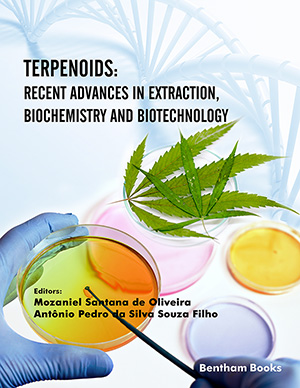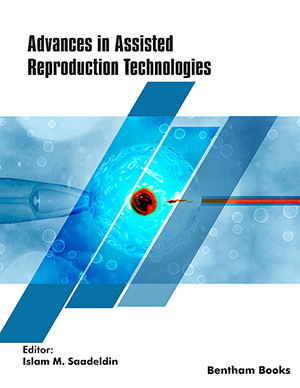
Abstract
The morbidity and death rates linked to diabetes mellitus are substantially increased by foot ulcers, a prevalent consequence of the disease. Proper wound management is essential for controlling foot ulcers. This includes monitoring the ulcers' healing progress through clinical reviews, changing dressings as needed, treating infections with the right medications, and ensuring that the ulcer is offloaded correctly. Taking pictures of the ulcer was a dependable way to track how diabetic foot ulcers were healing in the past. Images of foot ulcers have recently experienced a tremendous change due to the emergence of digital cameras in cell phones. Artificial intelligence (AI) and other recent developments in digital health technology present a great chance to improve the efficiency of diabetes care, which might reduce the growth in healthcare costs associated with diabetes. Patients with diabetes can alleviate the burden on clinics and patients' transportation demands by electronically sharing photos of their ulcers, which diabetes care providers can remotely monitor. Improved remote monitoring of diabetic foot ulcers using smartphone apps is now possible with the help of a new generation of AI-powered solutions. This clinical update review aims to gather information on this trending topic so that medical professionals can be current on all the latest advancements in the field.
Keywords: Artificial intelligence, diabetic wound, diabetes, screening, early detection, ulcers.
[http://dx.doi.org/10.1016/j.lfs.2020.118661] [PMID: 33121986]
[http://dx.doi.org/10.3390/microorganisms9030618] [PMID: 33802777]
[http://dx.doi.org/10.1007/s00210-009-0476-y] [PMID: 20012267]
[PMID: 19211983]
[http://dx.doi.org/10.1016/j.lfs.2021.119311] [PMID: 33662428]
[http://dx.doi.org/10.1186/s12963-018-0166-4] [PMID: 29903012]
[http://dx.doi.org/10.1177/2047487319881021] [PMID: 31766915]
[http://dx.doi.org/10.1001/jama.2018.1150] [PMID: 29536101]
[http://dx.doi.org/10.1016/S0168-8227(00)00183-2] [PMID: 11024588]
[http://dx.doi.org/10.1016/j.cmet.2018.09.005] [PMID: 30269984]
[http://dx.doi.org/10.1016/S0002-9343(01)00742-2] [PMID: 11448654]
[PMID: 16378564]
[http://dx.doi.org/10.1136/bmj.314.7085.964] [PMID: 9099125]
[PMID: 24627628]
[http://dx.doi.org/10.1016/j.ijnurstu.2008.04.005] [PMID: 18571173]
[http://dx.doi.org/10.1046/j.1464-5491.2000.00390.x] [PMID: 11131099]
[http://dx.doi.org/10.1038/s41584-020-0461-x] [PMID: 32709998]
[http://dx.doi.org/10.1016/j.cjca.2021.08.015] [PMID: 34461229]
[http://dx.doi.org/10.1016/S2589-7500(22)00030-9] [PMID: 35337640]
[http://dx.doi.org/10.1007/s12553-023-00792-w]
[http://dx.doi.org/10.4324/9781315200880]
[http://dx.doi.org/10.2196/46992] [PMID: 37819698]
[http://dx.doi.org/10.1038/s41746-021-00487-4] [PMID: 34404895]
[http://dx.doi.org/10.1016/j.cosrev.2020.100341]
[http://dx.doi.org/10.3390/jpm12020169] [PMID: 35207657]
[http://dx.doi.org/10.1007/s10916-011-9780-4] [PMID: 21964969]
[http://dx.doi.org/10.1016/j.csbj.2016.12.005] [PMID: 28138367]
[http://dx.doi.org/10.1016/j.compbiomed.2021.104599] [PMID: 34247130]
[http://dx.doi.org/10.1007/s10994-019-05855-6]
[http://dx.doi.org/10.1007/BF00114727]
[http://dx.doi.org/10.1038/s41573-019-0024-5] [PMID: 30976107]
[http://dx.doi.org/10.4324/9781003286103]
[http://dx.doi.org/10.1177/1534734608318236] [PMID: 18492676]
[http://dx.doi.org/10.3855/jidc.1827] [PMID: 22505442]
[http://dx.doi.org/10.2196/10775] [PMID: 29848472]
[http://dx.doi.org/10.1089/pop.2018.0129] [PMID: 30256722]
[http://dx.doi.org/10.1371/journal.pone.0219636] [PMID: 31826018]
[http://dx.doi.org/10.3349/ymj.2019.60.2.191] [PMID: 30666841]
[http://dx.doi.org/10.1016/j.diabres.2022.110013] [PMID: 35870573]
[http://dx.doi.org/10.1038/s41598-020-61123-x] [PMID: 32157171]
[http://dx.doi.org/10.1001/jama.2009.726] [PMID: 19470990]
[http://dx.doi.org/10.1007/s00146-013-0456-0]
[http://dx.doi.org/10.1177/1932296817710475] [PMID: 28539087]
[http://dx.doi.org/10.1016/j.metabol.2021.154872] [PMID: 34480920]
[http://dx.doi.org/10.1016/j.cmpb.2017.09.004] [PMID: 29054258]
[http://dx.doi.org/10.1016/j.ijbiomac.2020.02.048] [PMID: 32044364]
[http://dx.doi.org/10.1088/1757-899X/490/4/042049]
[http://dx.doi.org/10.1016/j.ijmedinf.2021.104429] [PMID: 33647600]
[http://dx.doi.org/10.1016/j.ijmedinf.2016.09.014] [PMID: 27919371]
[http://dx.doi.org/10.1530/JOE-20-0596] [PMID: 34783681]
[http://dx.doi.org/10.1186/s12911-022-01890-x] [PMID: 35644620]
[http://dx.doi.org/10.2337/dbi20-0001] [PMID: 32843567]
[http://dx.doi.org/10.1109/BHI.2014.6864296]
[http://dx.doi.org/10.1016/j.bioadv.2022.212980] [PMID: 35882136]
[http://dx.doi.org/10.3390/ph16070908] [PMID: 37513820]
[http://dx.doi.org/10.2174/2211352521666230823122601]
[http://dx.doi.org/10.2174/0102506882282929231212074538]
[http://dx.doi.org/10.1016/j.biopha.2023.115881] [PMID: 37989030]
[http://dx.doi.org/10.2174/0122117385266276230928064235] [PMID: 37818559]
[http://dx.doi.org/10.1007/s13300-018-0467-4] [PMID: 29971748]
[http://dx.doi.org/10.1089/dia.2010.0008] [PMID: 20597830]
[PMID: 37276096]
[http://dx.doi.org/10.1177/19322968221085026] [PMID: 35348398]
[http://dx.doi.org/10.3390/s23146294] [PMID: 37514589]
[http://dx.doi.org/10.1016/j.renene.2022.08.134]
[http://dx.doi.org/10.3390/s22124620] [PMID: 35746402]
[http://dx.doi.org/10.2196/43959] [PMID: 37556198]
[http://dx.doi.org/10.20965/jaciii.2017.p0474]
[http://dx.doi.org/10.1016/j.cell.2015.11.001] [PMID: 26590418]
[http://dx.doi.org/10.1055/s-0029-1240928]
[http://dx.doi.org/10.1111/jdi.12854] [PMID: 29683557]
[http://dx.doi.org/10.3390/ijerph111111645] [PMID: 25402562]
[http://dx.doi.org/10.1007/s42452-019-1884-3]
[http://dx.doi.org/10.18006/2023.11(2).380.393]
[PMID: 37861051]
[http://dx.doi.org/10.1186/s13098-023-00983-5] [PMID: 36782201]
[http://dx.doi.org/10.1016/j.bbe.2018.06.005]
[http://dx.doi.org/10.1016/j.rser.2020.109792]
[http://dx.doi.org/10.2196/22458] [PMID: 33512324]
[http://dx.doi.org/10.1016/j.diabres.2020.108388] [PMID: 32858096]
[http://dx.doi.org/10.3390/s20113214] [PMID: 32517068]
[http://dx.doi.org/10.1089/dia.2015.0413] [PMID: 27196358]
[http://dx.doi.org/10.1016/j.cmpb.2017.05.010] [PMID: 28688482]
[http://dx.doi.org/10.1016/S0140-6736(19)30368-X] [PMID: 30808512]
[http://dx.doi.org/10.1016/j.xcrm.2023.101213] [PMID: 37788667]
[http://dx.doi.org/10.1089/dia.2013.0081] [PMID: 23786228]
[http://dx.doi.org/10.1016/j.beem.2015.03.001] [PMID: 26051293]
[http://dx.doi.org/10.2337/dc09-1830] [PMID: 20150292]
[http://dx.doi.org/10.1111/dom.12852] [PMID: 27981804]
[http://dx.doi.org/10.1186/1472-6947-9-28] [PMID: 19515252]
[http://dx.doi.org/10.1055/s-0041-1728757] [PMID: 33975376]
[http://dx.doi.org/10.4103/ijo.IJO_1989_18] [PMID: 31238395]
[http://dx.doi.org/10.1186/s12933-023-01985-3] [PMID: 37749579]
[http://dx.doi.org/10.3390/s22114249] [PMID: 35684870]
[http://dx.doi.org/10.1016/j.compbiomed.2020.103744] [PMID: 32421649]
[http://dx.doi.org/10.1007/s11517-022-02617-w] [PMID: 35751828]
[http://dx.doi.org/10.12968/jowc.2019.28.Sup10.S13]
[http://dx.doi.org/10.3389/fmed.2020.601602] [PMID: 33681236]
[http://dx.doi.org/10.3390/s23073618] [PMID: 37050678]
[http://dx.doi.org/10.3390/diagnostics12051076] [PMID: 35626234]
[http://dx.doi.org/10.1016/j.diabres.2023.110951] [PMID: 37848163]
[http://dx.doi.org/10.2196/10105] [PMID: 30305266]
[http://dx.doi.org/10.1145/3152771.3156158]

























